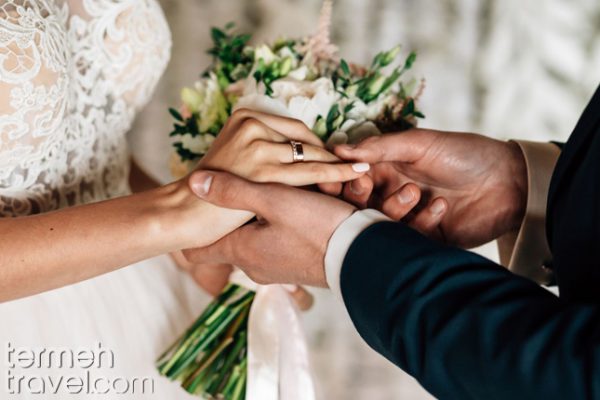Linguists believe that languages are like colorful lenses from which we see the world. So, when you think about different languages in Iran, you can witness a magnificent rainbow. Each color has its own character, beauty, and wonders. You can learn Farsi, to read the magical poems of Rumi, and Kurdish and Arabic to whisper old laments. Azari language of Iran will give you a new vision of Turkish songs, and by learning Balouchi and Mazandarani, you can listen to folktales of the North and East South of Iran.
Culture and language are deeply intertwined. If we omit the aspect of culture from a language, nothing will remain of it. By knowing a language, you can find yourself in the middle of a new culture and enjoying every subtle detail. That is why reading original books and watching original movies are always more pleasant than their translations.
Now, we want to take you on a journey to get familiar with different languages in Iran to see why Persia is the land of unity in diversity and how these languages bring their own color to Persian culture.
Table of Contents
Farsi or Persian Language
Among different languages in Iran, the official language of Iran is Farsi or Persian. No matter which ethnicity you belong to or which part of Iran you live, you need to speak Farsi to manage your official works. Farsi is a branch of Indo-European family that shares many similarities with the Indian, Afghan and Pakistani Languages.
Persian has changed throughout history and, like any other dynamic language, got inspired and affected by different cultures. You can easily find the trace of Arabic in Farsi, from the period of time that Arabs came to Iran and brought Islam. Some vocabulary from French and English found their way to the Persian Language as well, due to the economic communications with these people.
Farsi is one of the most beautiful, pleasant to hear, and rhythmic languages in the world. The delicacy of its lexicon allows great Persian poets to combine their artistic spirituality into language and form some of the most beautiful poems. Arguably, the most romantic poems or Ghazals belong to Saadi, the Iranian poet of the 13th century.
As he says, “Slow down, The Caravan!
Let me weep; let me sob!
Like the springs’ raining clouds!
Let me weep, weep; let me sob, sob!
Even the rocks moan- in time of farewell,
Parting with the beloved!”
We cannot talk about the Persian language without mentioning Ferdowsi, who is the knight of Farsi. Due to the attack of the Arab army, Iranian culture was rapidly changing. Therefore, Ferdowsi wrote a book of poetry to keep the Persian language alive. What he did is the reason that Iranians can read and understand Farsi texts from centuries ago without much difficulty.
To get familiar with the Persian culture and learn how to read the masterpieces of great Persian artists such as Saadi, Hafiz, Rumi, and Ferdowsi, you can use our Beginner Guide to Speak Farsi, as a head start.
Azari or Turkish Language of Iran
Mostly in the North West of Iran, people of the East and West Azarbaijan, Zanjan, Qazvin, and Ardabil communicate through the Azari language, which is a branch of the Turkish language family. Besides these regions, some ethnicities in Iran, such as Qashqai and Turkamans, speak different dialects of Azari language too. Although there is a major similarity between the Azari language of Iran, Turkish of Turkey, and the Republic of Azerbaijan, you will find differences among them as well, mostly in their phonetics, which is related to the sound units. Comparing to other types of Turkish, if you listen to Iranian Azari, you can understand the similarities between this language and the sounds in Farsi.
There are many famous arts and literary works in the Azari language, which are breathtaking and captivating. Shahriar is the most famous Azari poet in Iran. And his poetry is full of love, loss, and sorrow for his lovers.
As he says in one Persian poem,
“Oh moon, you comfort my aching heart tonight.
After all, oh moon, in my anguish you share
The slow waning of your life, I know, and only I know.
How, in separation from the sun, you suffer”.
The beautiful part of Azari is the fact that you can easily master different types of Turkish learning this language.
Kurdish Language of Iran
Kurd people of Iran are some of the most strong yet emotional people that you encounter. This feature exists in their language as well to make it fascinating to listen and learn. Although there are a variety of Turkish dialects in different parts of Iran such as Sanandaj, Kermanshah, and Ilam, and people of these regions may not understand one another, all of them belong to the Indo-European family as well.
Based on the research that Vladimir Minorsky had on Persian Kurdish, he argues that the ancestors of Kurds in Iran are Medes, who are ancient Iranians, which shows how old and fantastic their culture is.
The Kurdish language is full of amazing songs, but Kurdish lullabies also have a unique enchanting spirit. You can listen to one of the most beautiful Kurdish lullabies performed by Keyhan Kalhor of the most excellent Persian musicians. Kalhor honored world peace and sang this lullaby for Kurdish children.
Balouchi Language of Iran
Balouchi is probably the most similar language to ancient Persian. This beautiful language is used in Balouchestan in the South-East of Iran, Afghanistan, and Pakistan. Unfortunately, the Balouchi language is at risk of extinction as the new generations are not very fond of learning this language, which is devastating because if a language dies, a significant part of a culture will be destroyed automatically.
Another reason that Balouchi may get forgotten is the fact that the speakers of this language have only heard their literature orally from their grandparents, and there are not many written works in the Balouchi language. Although the language is something dynamic, and we cannot expect to keep one unchanged, in this case, there is a higher risk of losing beautiful Balouchi literature.
Moreover, if you want to get familiar with Balouchi language more, you can listen to this song and hear the phonetics of Balouchi.
Mazandarani or Tabari Language
Mazandarani, Mazani, or Tabari is the language of the people of the North, in Mazandaran province. Mazani people claim to have some of the oldest written pieces in their language compared to other different languages in Iran. Although most pieces of evidence about this language have been destroyed, people who speak Mazandarani are keeping this language alive. And you can still find the fun, loving characteristics of people of the North in the folk songs of the Mazani language.
Ghabous Nameh or Qabus Nama is one of the few remaining works written in Mazani. This book offers advice and talks about principles and manners. Also, some of these points are written in poetry, which makes it even more enjoyable. Keykavous wrote this book during the 11th century, and you can see a picture of it here.
Arabic Language of Iran
People of the South can charm you with their beautiful Arabic language. Arabic is one of the most detailed and complete languages in the world. Iranian Arabic and Arabic of Iraq and South Arabia, share some similarities in lexicon and phonetics. However, the warm people of Khuzestan, Bushehr, and a part of Kurdestan are the majority of Arabic speakers in Iran. They used Iranian culture and shaped the Arabic language to fit Persian more.
Listening to sailors spreading their net and chanting rhythmic Iranian Arabic folks can melt your heart and leave you speechless. Moreover, hearing people of the South, speak their beautiful Arabic language and offer you their delicious coffee brings a feeling of comfort and happiness. There is magic in their language that can make your heart warm and fuzzy. Therefore, if you have the chance to learn Arabic, don’t miss that.
What Are Different Dialects in Iran?
There are various types of dialects in Iran because each language has many branches known as its dialect. Different languages of Iran such as, Arabic, Kurdish, Azari, Balouchi, and Mazani, have their own dialects that people in different parts of their region speak. However, Lori and Gilaki are two significant dialects in Iran. People of Lorestan and a part of Fars province are the major speakers of the Lori dialect.
People speak Gilaki in the North of Iran, specially Gillan Province. This fascinating dialect shares similar attributes with the Mazani language because their regions are close to one another. Therefore, a non-Gilaki or Mazandarani speaker may find it difficult to distinguish the differences.
These varieties and differences make Iran an exciting place to visit. You can pack your bag, sign up for a tour, and Iran Visa to explore different parts of this amazing country. Then you can listen to different languages in Iran and learn more about their cultures.
Sources:
- https://link.springer.com/referenceworkentry/10.1007%2F978-3-030-02438-3_137
- Wardhaugh, R (1997). An introduction to sociolinguistic















Leave a Comment